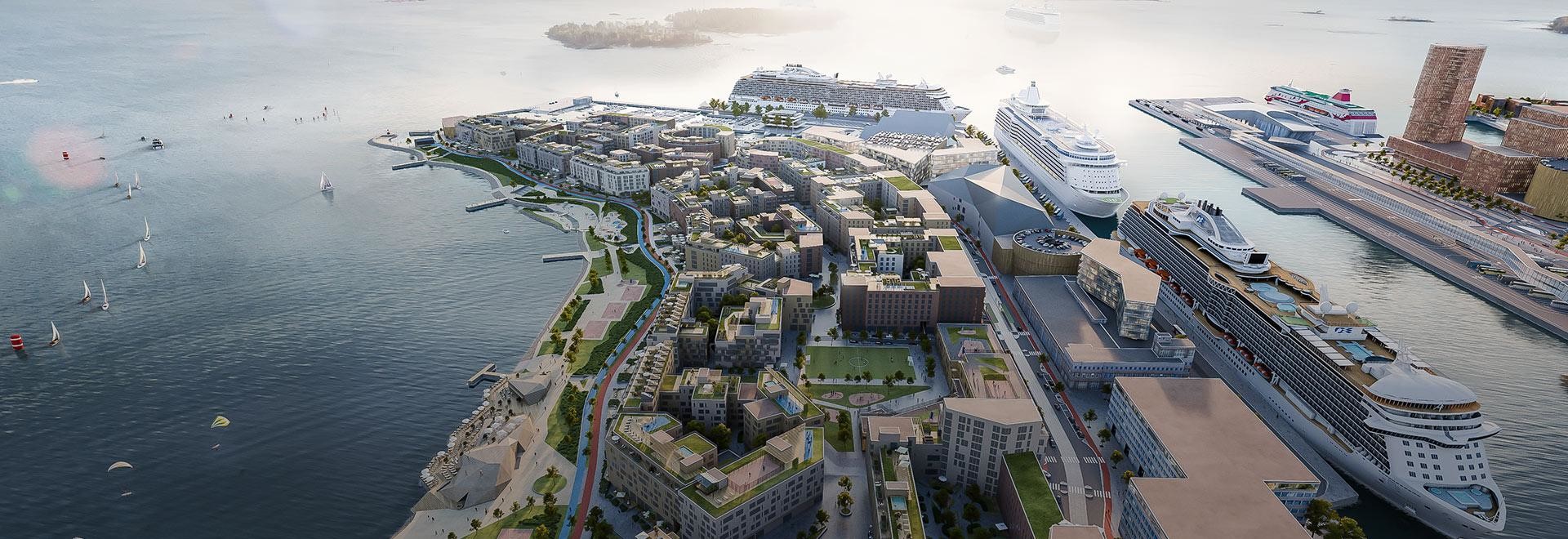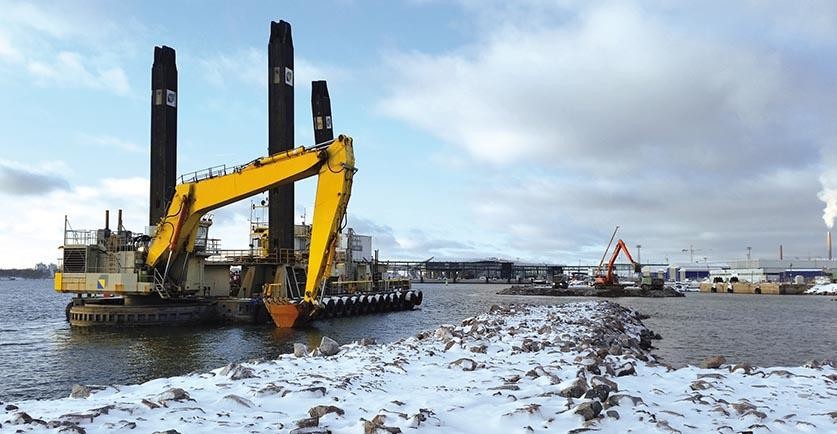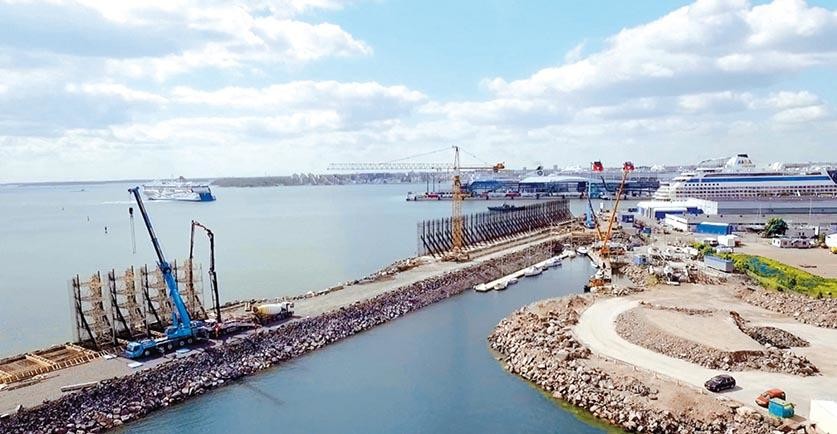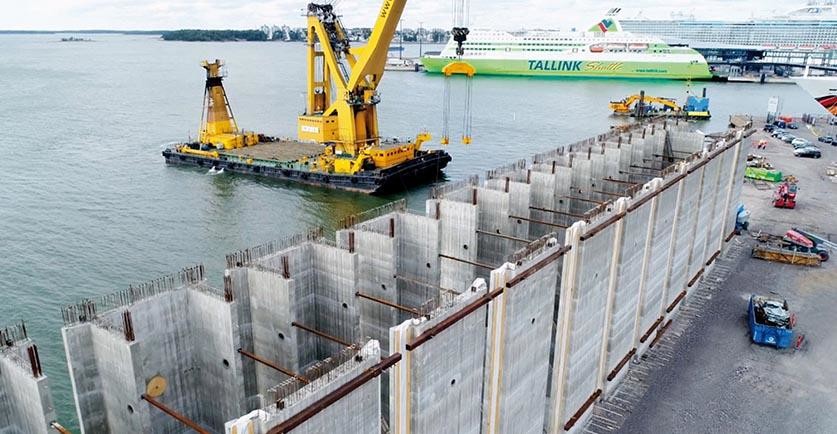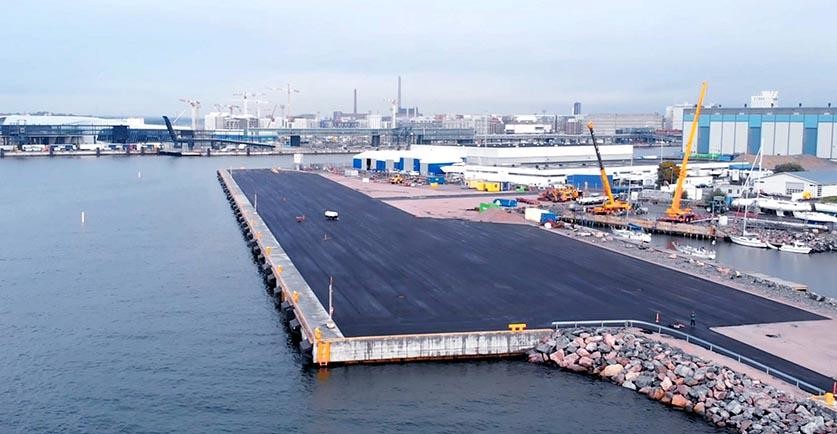The total volume of sea-filling required in the area totals 1,200,000 m3. In the contract, Terramare performed dredging of soft sediment and other, thin-layer dredging.
“For the new residential area, the filling work was performed from the sea and the shore,” says Project Manager Jani Vyyryläinen of Terramare. During the open water season 2020, the rock waste sea-filling of the first phase of the project was carried out off Hernesaari and at Melkki. During 2021-2022, second-phase filling work was completed,” explains Vyyryläinen.
Blasted rock was brought by sea from the Vuosaari fairway project: in this way, it was possible to utilise the blasted rock generated in connection with the deepening of the Vuosaari waterway, reducing the carbon footprint.
Design smart, implement green
Sea transport also significantly reduces road transport deliveries through the streets of southern Helsinki. Transport by sea on barges from eastern Helsinki directly to the areas to be filled saves the urban environment not only from traffic but also from dust.
According to the City of Helsinki’s calculations, sea transport is equivalent to around 55,000 truckloads and reduces fuel consumption by 1.5 million litres. The monetary saving is around EUR 15 million, while the carbon emissions saved amount to around 3,200 tonnes.
“In projects like this, it was natural to look for synergies that have positive environmental impacts. The contract was completed in January 2022 and from now on the city of Helsinki will continue the preconstruction works, “ says Vyyryläinen with satisfaction.
In connection with the project, a new caisson quay was built for the City of Helsinki at Hernesaari and filling work was carried out in the Jätkäsaari and Ruusuniemi areas.
Construction like a jigsaw puzzle
Terramare already has a lot of experience of Hernesaari. Before a new cruise ship quay could be built at Hernesaari a few years ago, the company carried out environmental and mass transfer dredging at the site and levelled the foundation embankment in 2016–2017. After levelling, sea-filling of the backing embankment of the cruise ship quay was completed: blasted rock was transported by sea on cargo vessels from Jätkäsaari and Kruunuvuori. The blasted rock was obtained from, among other places, the Western Metro and Töölö parking hall work sites, so circular economy principles were also realised in the project.
Construction Manager Jouko Sederholm remembers that the project presented its own challenges: building while cruise ship traffic was operating normally on the adjacent quay required considerable precision.
“A further challenge was the continuous monitoring of the stability of the surrounding area. We ended up always replacing only a small area of soft clay mass at a time with rock waste,” says Sederholm, describing the making of a demanding jigsaw puzzle.
Before the dredging and rock-waste filling work, Terramare also carried out the removal and reinstallation of submarine power and telecommunication cables as well as mains water and sewer pipes running from Hernesaari to Pihlajasaari.
New majestic cruise ship quay
The Hernesaari cruise ship quay built by Terramare was completed in 2018 and it is an impressive 313 metres long. The world-class modern quay can accommodate large luxury cruise ships up to 330 metres in length.
At the same time, the new cruise ship quay replaced the former Melkki quay, which was decommissioned in 2019 to make way for a bridge to be built across the harbour basin and a new residential area.
Back in 2016, Terramare implemented mass transfer at the Ahdinallas basin, which remains between the Melkki quay and the old Valtameri quay.

